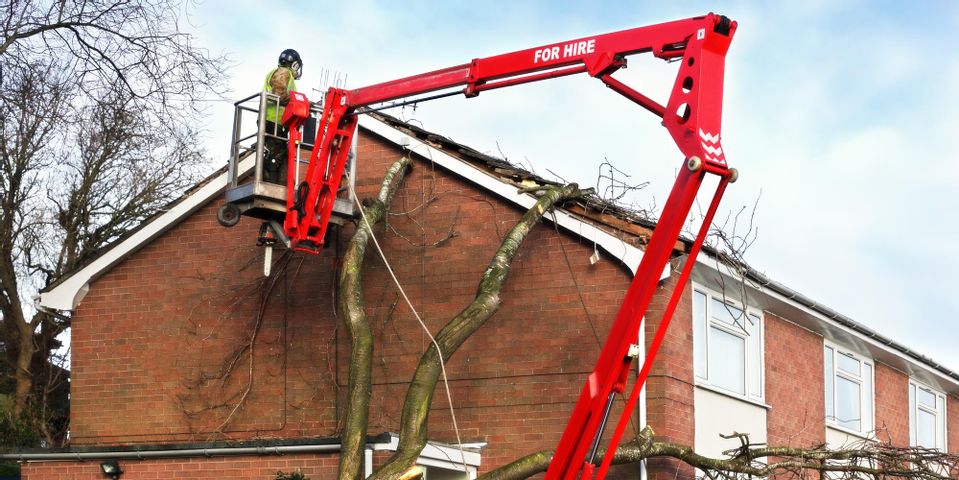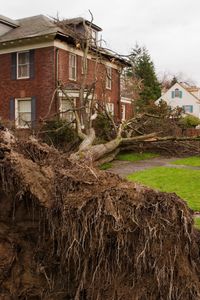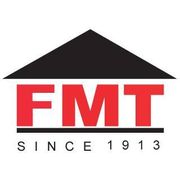
When storm season rolls around—from hurricanes to tornadoes—homeowners need to look out for the safety of their property, particularly their trees. While a valued addition to any yard, trees that don’t receive proper maintenance can be an imminent threat to nearby structures. Homeowners insurance has coverage included to handle this issue, but not every situation falls under the policy terms.
Factors That Play Into Homeowners Insurance Coverage
Accidental vs. Gradual Tree Damage
 The primary factor that comes into play with tree damage coverage is whether the issue was caused by the homeowner’s negligence or by risks outside of their control. Homeowners insurance will cover accidental damage—issues like high winds uprooting a tree or lightning knocking it over—because the tree wouldn’t have fallen if not for the severe weather.
The primary factor that comes into play with tree damage coverage is whether the issue was caused by the homeowner’s negligence or by risks outside of their control. Homeowners insurance will cover accidental damage—issues like high winds uprooting a tree or lightning knocking it over—because the tree wouldn’t have fallen if not for the severe weather.
Gradual damage, however, will be on the resident’s dime, even if the issue wasn’t apparent. A prime example would be overgrown roots infiltrating the home, wreaking havoc on pipes and plumbing or creating cracks in the foundation. While a homeowner may have needed to scour their property to notice this issue before it got out of hand, it still wouldn’t be covered because overgrown roots don’t just sprout overnight. With any damage, it is essential never to assume whether something is or isn’t included in the policy, and if unsure, consult the insurance company regardless.
Tree Maintenance
Regular maintenance is what keeps gradual issues at bay and even protects residents from loopholes in accidental damage coverage. Some homeowners insurance will not cover a tree falling—even in a storm—if there were signs of decay or improper upkeep that compromised its structural integrity. To keep landscaping in top shape, owners should have a tree specialist tend to their yard annually—checking and treating any signs of disease and pruning any dead or overgrown limbs.
Ownership of the Fallen Tree
If a neighbor’s tree falls on a person’s home, then the homeowner—not the neighbor—will initially pay for the repairs. Homeowners insurance companies do so to expedite the process but will later confirm who is responsible for the damage. When the neighbor is held liable due to issues like the ones listed earlier, then they will undergo what is called subrogation, which recovers the costs of the claim to their neighbor’s home. The insurance company will then reimburse the deductible their customer paid with these funds.
Other Considerations for Tree Damage Coverage
Tree Removal Coverage
Most homeowners insurance covers tree removal to an extent. Depending on the specifics of a policy, they might only cover up to a certain amount—like $500 worth of the service. Whether the tree damaged property might be a factor too, meaning that if it just fell in the yard and not on a structure, then the owner has to play for its removal.
Tree Replacement Coverage
A homeowners insurance policy will typically have a section devoted to landscaping coverage, which will handle the cost of replacing the fallen tree. The process will involve filing a claim that usually covers replacements up to 5% of the insured dwelling value. This price tag caps at $500 per item unless the owner specifically asks for an endorsement to increase the limit.
By following these suggestions, you may be able to avoid damages that could result in a large insurance claim. For more information on protecting your property, get in touch with the team at Farmers Mutual of Tennessee. Since 1913, they have provided quality insurance coverage at an affordable price to residents throughout the state of Tennessee. Their local independent agent will be happy to help you find the right coverage for your home, mobile home, rental dwelling, or farm at a price that suits your budget. Give Farmers Mutual of Tennessee a call today at (800) 824-9555, and visit them online for more information.
About the Business
Have a question? Ask the experts!
Send your question

